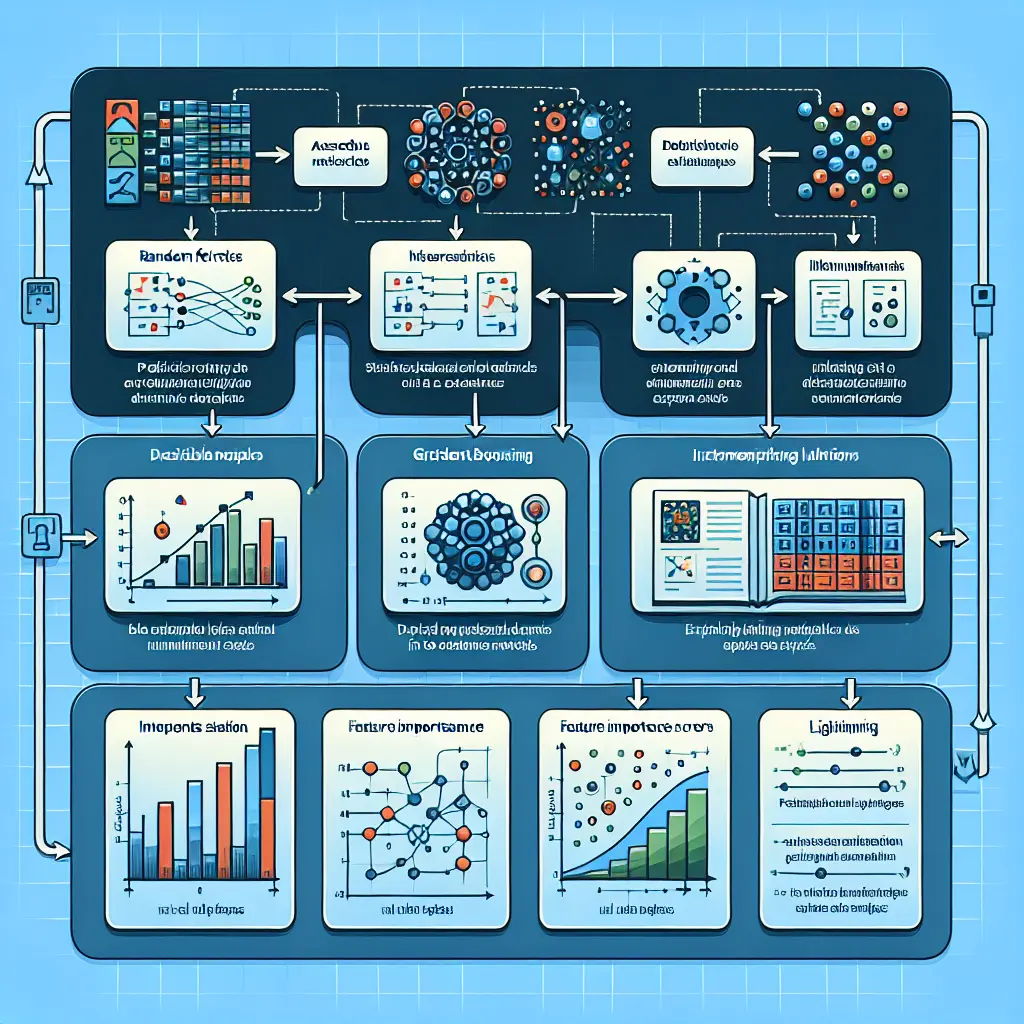Prompt
What advanced statistical method in Python would be most suitable for conducting multivariate analysis on high-dimensional data sets with non-linear relationships?
Answer
Recommendations for Advanced Statistical Method in Python for Multivariate Analysis on High-Dimensional Data Sets
Understanding the Problem or Objective:
- Conducting multivariate analysis on high-dimensional data sets with non-linear relationships using Python.
Assessing Data Characteristics:
- Identify the high-dimensionality of the dataset.
- Determine the presence of non-linear relationships among variables.
- Check for any outliers or anomalies in the data.
Selecting Appropriate Statistical Method:
Principal Component Analysis (PCA):
- Suitable for dimensionality reduction in high-dimensional data.
- Can capture non-linear relationships through kernel PCA.
t-Distributed Stochastic Neighbor Embedding (t-SNE):
- Effective for visualizing high-dimensional data in lower dimensions.
- Preserves local structure, useful for identifying non-linear relationships.
Random Forests Feature Importance:
- Utilize random forests to assess feature importance in non-linear settings.
- Identify influential variables for multivariate analysis.
Explaining the Rationale:
- PCA helps reduce dimensionality while preserving variation.
- t-SNE is valuable for visualizing complex relationships in high-dimensional space.
- Random Forests can provide insights into important features for non-linear relationships.
Guiding Through the Process:
- Implement PCA using
sklearn.decomposition.PCAin Python. - Utilize t-SNE with
sklearn.manifold.TSNEfor dimensionality reduction and visualization. - Employ random forests from
sklearn.ensemble.RandomForestRegressorto assess feature importance.
- Implement PCA using
Highlighting Potential Limitations and Alternatives:
- PCA may overlook non-linear relationships; consider kernel PCA or t-SNE.
- t-SNE can be computationally expensive for large datasets; consider alternatives like UMAP.
- Random Forests are robust but may not capture all complexities; use in conjunction with other methods like neural networks.
Ensuring Understanding and Confidence:
- Understand the strengths and limitations of each method.
- Experiment with different techniques to find the most suitable for the specific dataset.
- Combine multiple methods for a comprehensive analysis of high-dimensional, non-linear data in Python.
Description
Explore PCA, t-SNE, and Random Forests for non-linear relationships and dimensionality reduction in high-dimensional datasets using Python, guiding implementation and considering limitations.
More Statistical Method Recommenders
Apache Flink Statistical Method RecommenderApache Pig Statistical Method RecommenderAzure Data Factory Statistical Method RecommenderC/C++ Statistical Method RecommenderCouchDB Statistical Method RecommenderDAX Statistical Method RecommenderExcel Statistical Method RecommenderFirebase Statistical Method RecommenderGoogle BigQuery Statistical Method RecommenderGoogle Sheets Statistical Method RecommenderGraphQL Statistical Method RecommenderHive Statistical Method RecommenderJava Statistical Method RecommenderJavaScript Statistical Method RecommenderJulia Statistical Method RecommenderLua Statistical Method RecommenderM (Power Query) Statistical Method RecommenderMATLAB Statistical Method RecommenderMongoDB Statistical Method RecommenderOracle Statistical Method RecommenderPostgreSQL Statistical Method RecommenderPower BI Statistical Method RecommenderPython Statistical Method RecommenderR Statistical Method RecommenderRedis Statistical Method RecommenderRegex Statistical Method RecommenderRuby Statistical Method RecommenderSAS Statistical Method RecommenderScala Statistical Method RecommenderShell Statistical Method RecommenderSPSS Statistical Method RecommenderSQL Statistical Method RecommenderSQLite Statistical Method RecommenderStata Statistical Method RecommenderTableau Statistical Method RecommenderVBA Statistical Method Recommender
